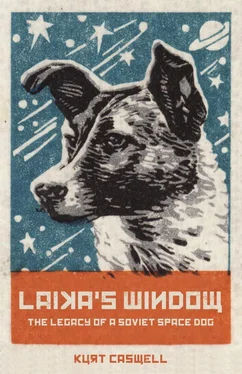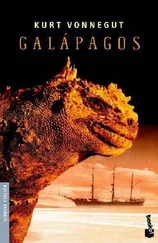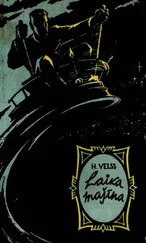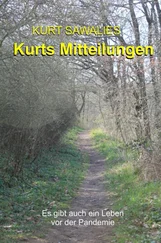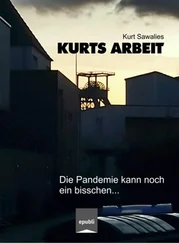If Laika was going to survive in orbit for seven days on board Sputnik II (the duration of her mission), she would need food and water. In microgravity, dry kibble and canned dog food would float around inside the capsule. “Igor Sergeevich Balakhovsky, who dealt with the problem of dog food in orbital flights, brilliantly solved [this problem],” writes Adil Ravgatovna Kotovskaya of the Institute of Biomedical Problems in her essay “Why Were Flying Dogs Needed for Rockets and Satellites to Launch Yuri Gagarin?” Balakhovsky developed a gelatinous mixture of food and water that would hold together and stick to a feeding tin. Laika and the other space dogs had to be trained to eat this food, because it was not very palatable. Such training probably consisted of introducing Laika to the food a little at a time and also withholding food until she was hungry enough to eat anything.
In the sources I consulted, space dog food is always referenced as providing adequate nutrition and water, but how could this be so? In their 1959 report, Chernov and Yakovlev write that the space dog food was made from “40 percent bread crumbs, 40 percent powdered meat, and 20 percent beef fat” mixed with water and agar to form a “gelatinous substance.” A typical space dog, they report, required no more than 100 grams per day of the pressed food before it was mixed with water and agar. He goes on to say that the space dogs required between 120ml and 200ml of water per day. Presumably then, the formula for space dog food was a mixture of 100 grams of food with upwards of 200ml of water, plus the agar to hold it together. Two hundred milliliters of water weighs 200 grams, so the space dog food was mixed at a ratio of roughly one part food and two parts water.
Let’s concede that 100 grams of pressed food (before the added water) was adequate for a space dog for one day. What about the water? How much water does a dog need in one day? According to veterinarians I’ve worked with, most dogs require a good deal of water, between 15 and 30ml of water per pound of body weight, per day. Laika weighed thirteen pounds, so she would need 195 to 390ml of water per day, depending on activity level and environmental conditions. Based on these numbers, Chernov and Yakovlev’s space dog food meets only the barest minimum requirement for water. A dog can live for two or three days without any water, but by the third day, without emergency medical attention, the dog will surely die.
Instead of supplying adequate food and water, I think the space dog food was barely adequate. After a day or so eating only space dog food, a dog would be dehydrated, and without additional water it would continue on a downward spiral into death, probably within three days.
In Roads to Space , engineer Arkady Ostashov remarks that in a meeting the team discussed installing an automatic feeder in the capsule so that Laika could be fed daily to keep her in good health for as long as possible. But sensitive to reducing the weight of the satellite, Ostashov and other engineers suggested saving “a few kilograms by designing the feeder for one meal only, since [they] were mainly interested in knowing whether the dog would be able to eat at all.” Though the medical staff led by Yazdovsky and Gazenko surely supported feeding Laika once each day, the team opted to follow the engineers’ recommendations. They determined that Laika could survive for up to seven days without much loss of body weight on one feeding of a three-liter ration of space dog food. The food would be available to Laika when she was sealed inside the capsule before launch. What she did with that food was up to her. She could eat it all at once, slowly over time, or not at all. If she ate all the food before launch, the team would not be able to determine if she could eat in microgravity, so they were taking a gamble there. If she waited until after launch to eat the food, since they could not observe her from the ground, the only indication that she could eat in microgravity would be her survival for the duration of the mission, seven days.
Still, by my measure, there was no way for Laika to get enough water from her food to survive for more than about three days, so it really didn’t matter how often or how much food she was given, or if she was given any food at all.
¤
The mission goal was to keep Laika alive for seven days, keep her alive and transmitting biological data, and after that she would die. By that time her space dog food would be long gone and her oxygen would have run out. She would die, and eventually the satellite would come down too and burn up in the Earth’s atmosphere.
Space dogs had died before on missions, but Laika was the first and only dog sent up without a recovery plan. “They had already resolved themselves to sacrifice a dog,” Dubbs told me, “but only because the order came down [from Khrushchev]. Otherwise they probably would not have launched a dog into orbit until they could retrieve her.” The technology to deorbit a spacecraft and bring it back safely would be developed, and soon, but for this satellite the team would have to take a lot of shortcuts. There was so little time. “The manufacturing of the satellite started,” writes Ivanovsky in The First Steps . “People forgot to rest. The days and nights were passing at the speed of light.”
Imagine your boss, the brilliant and stern Korolev. He says he is under pressure from the premier to get this satellite into orbit, and you, some kind of engineer, are working on a waste catchment system for a dog that is going to die in space no matter what. Or perhaps you are developing food that is completely inadequate to keep a dog alive in space for more than a couple days. To save even more time, why not put the dog into the capsule and send it up with no waste catchment system, no food at all, and no water? Of course, the team was developing and testing systems for future human spaceflight, and the data collected from Laika on the performance of these systems was essential toward that end. But the point was to get that satellite up to celebrate the Bolshevik holiday and beat the Americans again. So why go to all the trouble of a waste system? Why go to all the trouble of developing food that wasn’t going to keep Laika alive?
I think these efforts are a testament to the care and respect the scientists and engineers had for the space dogs. They did what they did for science, but also because it was ethical, because it was humane, because the space dogs were their partners and colleagues and deserved to be treated well, as well as possible under the circumstances. The space dogs were teaching them everything they needed to know to achieve human spaceflight, and the team recognized this great debt. “Like their American counterparts they were, in essence, writing the book as they went along—making things up, trying things out, pushing the boundaries of their understanding,” write Burgess and Dubbs. Without the dogs, there would be no new book, there would be no new field of space medicine, there would be no pushing at the boundaries of understanding. The space dogs are the underpinnings of humanity’s exploration of space, our partners and our companions in cosmic exploration. Without the dogs, there would be no spaceflight.
¤
In 1925 the Russian writer Mikhail Bulgakov wrote a curious novel titled Heart of a Dog . Better known for The Master and Margarita , a novel often cited as one of the great masterpieces of the twentieth century, Bulgakov had abandoned a career as a physician to focus on writing. Indeed, his main character in Heart of a Dog , Philip Philippovich, is a physician, a surgeon more truly, who rescues a stray dog from the Moscow streets by offering it a piece of sausage. The dog, whom he calls Sharik, has been severely burned by a cook who threw boiling water on him as he rooted through the garbage. Upon receiving the sausage, this pathetic, whimpering dog is so happy that he follows Philippovich home. Later Philippovich is asked how he was able to get such a nervous dog to follow him. “By kindness,” he answers. “The only method possible in dealing with living creatures. By terror you cannot get anywhere with an animal, no matter what its stage of development.”
Читать дальше
